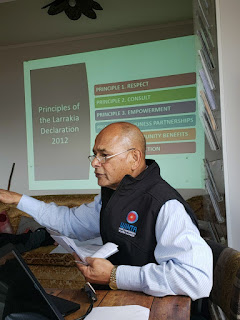By Titima Wanwilaiwan, final year MDP student
I came across Sunshine House Winnipeg in
2018, during the MDP Capstone course. I helped develop an evaluation
framework for their program with some classmates. Since then, the relationship has grown and I
admired their unique Drop-In program for marginalized community members. This
led me to wish to continue working with them.
 |
| Kara Passey, Titima, Elijah Osei-Yeobah & Margaret Ormond from Capstone project |
In the fall of 2019 my final field placement was with the Sunshine House. What excited me the most was being able to join a professional team and to put into practice my
programming development skills on challenging urban community issues. I worked
a lot on myself in designing an unique program from a harm-reduction perspective.
This helped me to gain insight in regards of discrimination and social
exclusion in societies for people living with HIV/AIDS, LGBTQ and people with
addiction issues.
Sunshine House is a community organization,
drop-in and a resource centre that works to fill the gap for marginalized
community health and well-being, and that focuses on social inclusion and harm
reduction.
My role was to
conduct research, provide research information, work with the team for the
revision of the project proposals and assist in the submission and revisions
for grant applications. The first proposal was on the Long-Term Health Impacts of
Solvent Use on Immune System.
 |
| Brainstorming session |
The second proposal that I was involved was
the Managed Alcohol Drop-In program (MAPs). This is a harm reduction approach
for people living with severe alcohol dependence who often experience chronic
homelessness, which is made worse by over policing, poor access to treatment by
the healthcare system, and racism and discrimination issues. During the three
month placement, I reviewed a lot of literature, brain stormed, and discussed with the team members who have insight from a decolonizing
framework. I learned from them community-led, holistically thoughtful, and inclusive approaches for developing
communities in urban settings.
For many First Nations people, substance
use serves as a method of coping with past and present trauma. Many of these
traumatic experiences are directly linked to Canada’s history of colonization,
which resulted in legal prohibition of Indigenous culture and language, massive
social and cultural disruption caused by the establishment of the reserve
system, residential school and child-welfare systems.
 |
| Buddy needs attention after a long meeting |
My final placement came to an end and
I am so grateful for the opportunity to work with Margaret Ormond and Levi Foy
(both former and current executive director). They both provided good support, mentorship, and helped me to discover the hidden pictures
and invisible communities. My perception of health and well-being is now
broader as I recognize how self-determination plays an important
role in health and well-being for someone who has been discriminated against,
and visible in a way that unaccepted by so called urban society. These lessons
will help me to share that love and respect to others in my future work. Again,
I learned so much from the community and all of these experiences from the field of urban development
among Indigenous community will equip me to be
more useful, resourceful and respectful. Meegwetch.



























